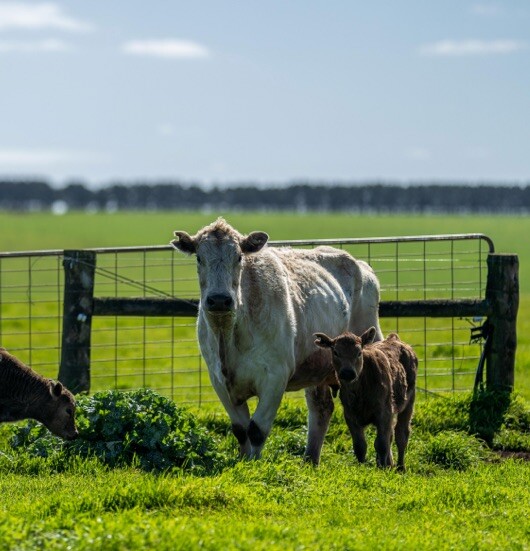Grazing young forage crops; things to look out for

Key messages
- Introduce stock slowly to grazing cereal and canola/brassica crops
- Feed test to know the quality of your crop
- Avoid nutrient imbalances when grazing young crops by providing a mineral/salt lick and roughage
- Know the signs of nutrient-related animal health disorders.
While some farmers have already started grazing winter forage crops, some later-sown crops will only be ready for grazing now. Cereals are ready to be grazed when they have developed secondary roots and are well anchored, usually around the 3-leaf stage.
While young crops are a great source of energy and protein (with energy levels (ME) ranging from 8 -14 (MJME/kg DM), protein (CP) 14-32% and dry matter (DM) ranging from 15 – 32%), they are low in fibre. When grazing young, lush forage crops or pastures, ensure livestock have access to enough cereal hay or roughage to avoid digestive and nutrient imbalances that can impact animal health.
Transition stock onto crops and lush feed gradually. Rumen microflora can take up to 7 to 10 days to become fully accustomed to a new feed source, so slowly introducing livestock to the crop will reduce the risk of digestive issues. Grazing of crops should initially be restricted to 1-2 hours per day, gradually building to unrestricted access over 7-10 days. Ruminants tend to graze most in the morning, so filling their rumens with hay early in the day is recommended before introducing livestock to a new crop in the afternoon.
Does your crop meet your livestock energy and mineral requirements?
Different stock classes have different energy requirements. A feed test through an accredited laboratory will help to understand the energy status of your crop or pasture and this will help identify if supplementary feeding with hay or grain is needed.
Deficiencies usually occur when livestock are grazing winter/spring pastures or young vegetative dual-purpose cereal crops that are low in sodium, magnesium and calcium. Young cereal crops are known to be low in calcium and magnesium, leading to mineral imbalances. High potassium levels in feed can inhibit absorption of calcium (hypocalcemia) and magnesium (hypomagnesemia) by stock.
When grazing young cereal crops, stock will require mineral supplementation via a lick or other commercial product to provide the additional magnesium, sodium and calcium (i.e. Causmag®). Brassicas have adequate calcium and magnesium levels for stock, so a lick may not be required when grazing a cereal/forage mix.
Brassica crops contain high sulphur levels, which can increase the risk of polioencephalomalacia (PEM) when grazed. Symptoms include: blindness, muscle tremors, convulsions, head pressing, star gazing, rapid eye movements, incoordination, recumbency and death. PEM can be prevented by gradually introducing stock to the crop, not grazing a stressed crop, and providing access to an alternative feed source.
Animal health issues when grazing crops
A change in feed can cause animals to develop pulpy kidney (enterotoxaemia), caused when a normally occurring bacterium produces a toxin. Pulpy kidney most often occurs in rapidly growing lambs grazing lush pasture or grain, so ensure livestock are up to date with their clostridial vaccinations at least two weeks before being introduced to the crop.
Nitrate/nitrite poisoning can also occur when stock suddenly consume plants with high nitrate levels, so a gradual transition onto feed is required. It is most common under drought, cloudy or cold weather conditions and after herbicide applications (which increase the palatability of high-nitrate broadleaf weeds). Nitrogen fertiliser also increases the risk, so stock should not be introduced to a crop with nitrogen applied until two weeks after the first significant rainfall. Testing can identify high concentrations; crops with nitrate levels above 3000-5000 mg/kg are at risk of toxicity, especially in pregnant stock. Symptoms include scours, salivation, abdominal pain, abortions, staggers, convulsions, and sudden death.
References & further reading
- Putting stock on to winter crops - Dr Sue Street – Local Land Services Livestock Officer (Central West)
- Interpreting feed test results in relation to potential effects on animal health – Dr Katelyn Braine, LLS district Veterinarian (Riverine Plains July 2021 Newsletter)
- Riverine Plains Livestock Webinar (June, 2022)
Author
NEWS
Keep up to date with the latest news from across the Riverine Plains.
-
Livestock
-
People
-
Grains
-
Sustainability

